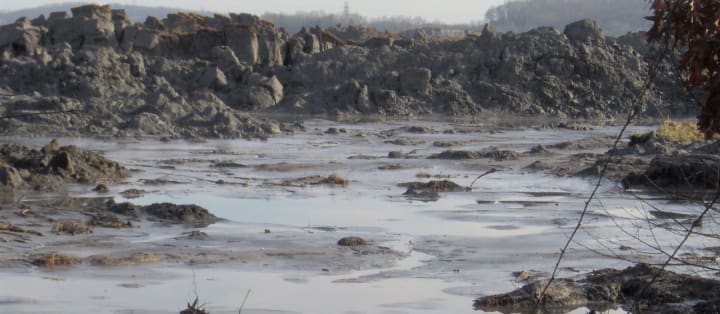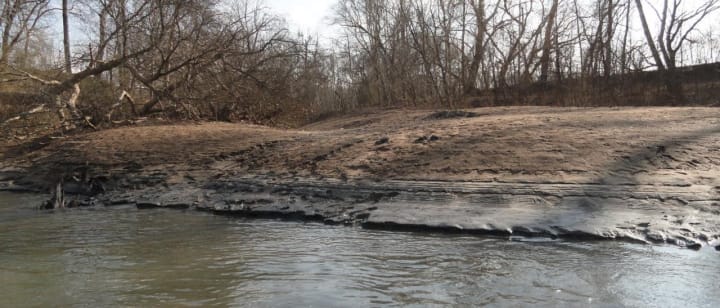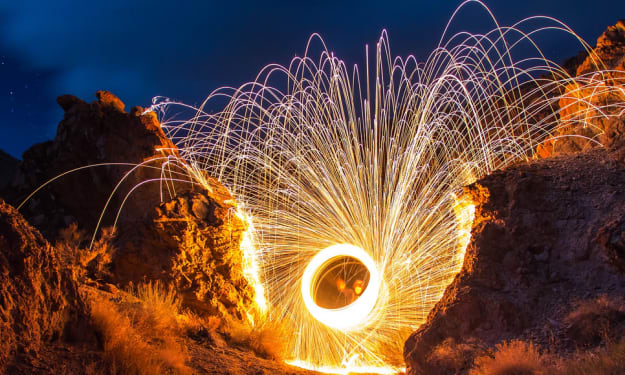Energy #2 - Coal
A breakdown of coal processing and use in power production.

It began forming from the dead 300 million years ago. Its presence covered most of the known world. It bound itself to ancient civilizations using it to, at first survive, and then thrive as our ancestors removed it from burial and burned it to ash.
Prologue
Scientists and archaeologists trace the wide-spread use of coal as far back as 3500 years in ancient China. In one noted case, however, scientists saw evidence of coal use 73,000 years ago during Europe's ice age.
Coal is abundant, easy to light, and, when lit, creates flames promising warmth and production. In ancient China, its discovery found wide-spread use throughout the continent. The harmful effects of coal may have been apparent, but its benefits far outweighed the risks of the times.
Coal Use in Power

Systems transfer pulverized coal into a blast furnace that burns the fuel. The process creates additional heat and gases that raises temperatures in the blast-furnace high enough to transfer heat to a Steam Generator. The water within a Steam Generator receives the transferred heat allowing for the conversion of water to steam.
The steam has its moisture removed and may be further heated, but ultimately transfers to the blades of a turbine. The steam spins the turbine at high speeds, which then also turns a generator. Spinning the generator creates electricity.
Transmission systems transfer the electrical power generated to step-up transformers that raise the voltage ridiculously high. In some power plants I've worked at, systems increased the energy to at least 500,000 volts. Stepping it up so high compensates for the loss of power due to heat losses that occur during transmission. Depending on where the power goes, it may pass through various substations to either step-down the power for consumer use or bump it up to send it along.
Different types of power plants and processes reduce waste generated from coal power by employing various methods. Our need and drive to be environmentally friendly are to thank for the progress of these technologies. No production of energy, in our generation, is worth it if we can't produce it as clean as reasonably achievable.
What Remains From Burning

A fraction of the coal that's burned becomes CCR and is non-combustible. What remains is a mix of materials. Clays, quartz, and other minerals form tiny glass-like beads under intense heat from burning (National Geographic).
It also concentrates substances like arsenic, cadmium, lead, vanadium, and chromium, as well as, other carcinogenic heavy metals (National Geographic). These can be easily inhaled with any dust in the air.
Oh, and the coal ash is radioactive.
Hazardous Materials

Coal is a fossil fuel that, when burned by the power plant, produces coal ash, also known as Coal Combustion Residuals (CCR) (EPA). The EPA regulates how power plants must treat CCR because of constituents like mercury, cadmium, and arsenic (EPA).
Power plants must demonstrate to state regulators, as well as the EPA, that its handling meets regulatory requirements. CCR, like many other power production byproducts, harms the environment and the people exposed to it. Sadly enough, the EPA does not consider coal ash as a hazardous material even though it consists of elements that, by themselves, the EPA classifies as a hazardous material. Talk about loop-holes. Sheesh.
Kingston, TN, and Eden, NC, are examples of what happens when anyone mishandles this waste.
Kingston, TN

On December 22, 2009, a TVA dike ruptured, spilling more than a billion gallons of coal ash into the Emory River. Ten years later, the two hundred or so workers responsible for the cleanup are either dead or sick as a result of inhaling the toxic material within the coal ash (National Geographic).
The workers' company forbade them from using protective gear during cleanup. Their bosses did not allow them to use respirators or anything that could protect them. The intent was to put forth a false face of safety and security.
Eden, NC

In 2014, a North Carolina Duke Energy power plant's drainage pipe at the Dan River Steam Station ruptured, spilling 39,000 tons of coal ash into the river (Greensboro). The spill coats the river with ash up to 70 miles away.
Contrary to the TVA plant, Duke Energy was quick to act in cleaning up the river and handling the ash until they adequately disposed of it at a permanent facility. Duke Energy cleaned things up so well that Environmentalists praised them for their efforts and thanked them for their actions.
Radioactivity
"Coal ask is more radioactive than nuclear waste." - (Scientific American)
Radioactive Materials
Coal contains trace amounts of naturally occurring radioactive martial. When you concentration impurities as you burn coal, you accumulate these radioactive particles. Over time, the concentration of radioactivity will build up. Radioactivity from trace elements like uranium, thorium, radon, and others will build up over time during the use of coal for power.
Understand, however, that in unprocessed coal, elements like uranium and thorium are undetectable without special equipment. If handled poorly, these particles will contaminate the environment, or even poison the people living off the land. While natural coal contains trace elements not easily detectable, the very process of utilizing this fuel for power will build them up to the point where they can cause harm.
Muskingum River Power Plant

Muskingum River Power Plant in Beverly, Ohio, closed due to rising costs of environmental regulations in May 2015. Investigators found radon particles within the plant's groundwater. Additionally, the Environmental Integrity Project notes four coal plants as having contaminated groundwater above safe levels.
When results indicate that something measured, in this case, radioactivity, is above safe levels. What they are telling you is that if you drink it, you are at a higher risk of getting sick. In the case of radon, you could get cancer if you drank it. The longer you drink the water, the higher the chance of getting that or a similar disease.
Waste Reduction
Clean Coal Technologies
After an exhaustive search over the net, I have found a plethora of materials describing technologies that virtually eliminate the toxic chemicals resulting from coal power (How Stuff Works). The problem? Almost no power plant, at least in the U.S., implements the technology to clean coal.
Two companies in the U.S. purported to use clean coal technologies. The Kemper Power Plant in Mississippi could have become the first clean-coal plant in the country. Corruption, construction-issues, and cost overruns eventually doomed the company to switch to gas power generation to remain solvent (The Guardian). Oh, and they didn't appear to tell anyone about their problems until it was too late.
The second company is Duke Energy Corporation. They used federal subsidies to implement technology to remove nitrogen oxides (NOx) from its emissions. Not only was the NOx emissions 76 percent higher following its use of grants, but they also contaminated water in nearby rivers and lakes with carcinogens (Reuters). I don't think the United States is ready for this mythological process.
Perhaps the U.S. isn't serious about it, but other countries are ready.
KIGAM Korea
KIGAM Korea is a facility that cleans coal without the use of water. It separates the impurities that usually pollute the air with general coal ash. What remains is a significantly purer fuel for burning at any power plant.
After processing, they can sell the coal to any power plant wishing to buy it. I imagine the purchase may be costly, but when considering the possibilities with environmental contamination, it may be worth it.
China - World's Cleanest Power Plant
Shanghai's Wai Gao Qiao No. 3 power generation plant utilizes technology that removes sulfur, nitrogen oxides, carbon, and dirt during the coal burning process. It results in emissions that are 1/10th of what the European Union emits with its coal power. It isn't the technology marveled at in the U.S. It is technology actually in use by China.
China reports that they plan on transitioning to renewables, but until then, there is at least a plant in existence the U.S. can model.
Epilogue
Consider the use of coal power from the cradle to its grave. Coal is mined, burned at a power plant, and a reliable facility handles its wastes.
Each of the general stages discussed above has its issues, risks, and problems. The process and act of using coal for electricity generation will never be 100% clean. We can, however, reach a level of efficiency that may allow us to use this fuel for a more extended time. Until then, it's a dirty process that, if mishandled, can render water supplies toxic and condemn people to illness.
Let's face it. Coal is cheap, abundant, and easy to use for electricity production. We've used it for tens of thousands of years in other areas, and we have enough reserves to last for centuries. There's zero chance we will stop using it in at least my children's generation.
Hopefully, other forms of power production are either at a stage or will reach a stage where they are both cost-effective and will not contribute towards environmental damage at the level of a coal plant. Is it possible? We'll see in our next article.
Thank you!
Thank you for joining me on this Energy series. Our next article focuses specifically on Commercial Nuclear Power.
The article was first presented in the HIVE Community under my username Scholaris.






Comments
There are no comments for this story
Be the first to respond and start the conversation.